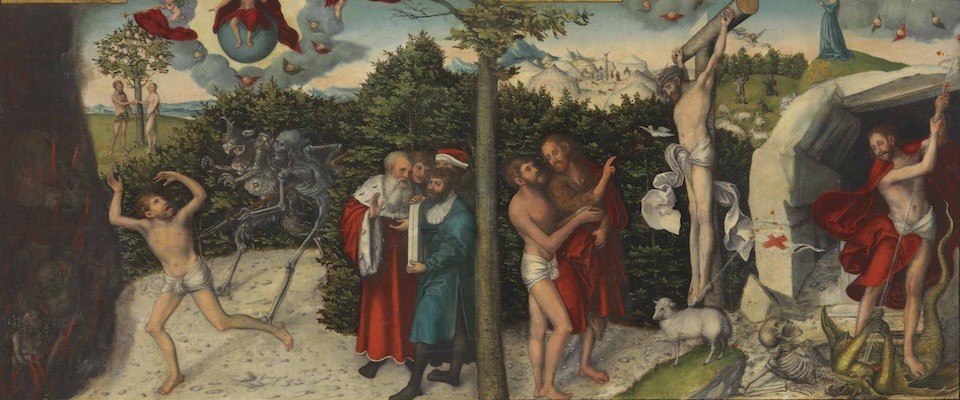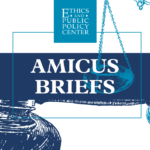
Published November 4, 2021
It is in many ways odd that we observe Reformation Day on October 31. Setting aside the somewhat fruitless debates about whether Luther actually posted the Ninety-Five Theses on the Wittenberg castle church door on that day in 1517 (for the record, I believe he did), it is well-known that he had said more radical things about the Church before (for example, in his Disputation Against Scholastic Theology in September 1517) and would do so again shortly afterward (at the Heidelberg Disputation in April 1518). Intellectually, either is a better candidate for the dating of the inception of the Reformation than the often obscure theses against indulgences that triggered Luther’s rise to fame.
Still, the very obscurity of many of the individual theses points to an interesting element in the Reformation’s popular success. The Reformation was not a popular success solely—or even primarily—because the populace read and embraced the arguments of the Reformers. As a Protestant, I rejoice that the Reformers carried the day in many places, with their appropriate emphasis on biblical authority, divine grace, and the finished work of Christ. They recovered the gospel and paved the way for many of the freedoms we in the West now take for granted. But I am not naïve enough to believe that they won simply by force of argument. Few people would have had the background to understand the issues, and that would have applied to many subsequent debates, particularly regarding the real presence of Christ in the Lord’s Supper. Few members of the populace could actually read. So what made the Reformation a popular success in so many places?
There is no simple answer to this, but a key element was the pamphlet war: the production of short, cheap, polemical publications, often illustrated with woodcuts, that served to shape the mind of the populace. Both Protestants and Catholics engaged in this pamphlet war, which was perhaps the first battle for the popular mind in Western history. What is interesting about these pamphlets is that they were not in general designed to seek and establish truth, but rather to discredit the opposition. It takes no advanced degree in theology to understand the intended message of woodcuts depicting the pope being excreted from the backside of a horned and cloven-hoofed devil. And it takes no training in Thomist metaphysics to understand the intended message of sexually explicit pictures of Luther and his wife. It is also rather obvious what kind of publication—major expositions of the faith by Calvin and Bellarmine, or the penny dreadfuls that the presses churned out in vast numbers—had more immediate effect.
There is a suggestive parallel in today’s world. It is increasingly clear that social media, particularly in forms like Twitter, is the modern-day equivalent of Reformation pamphlets as produced by all sides. Two hundred and eighty characters is hardly enough to mount a coherent argument about anything. The character limit renders argument impossible—at least impossible about anything that really matters, since thoughtful interaction with opposing views is a basic ingredient of expressing a worthwhile opinion on anything. One can, of course, string tweets together in a thread—but one might as well actually write an article at that point. Twitter may have its legitimate uses—offering the occasional witty one-liner, for example, or linking to articles discussing serious topics that cannot be reduced to tweetable truisms—but the pursuit of truth is not one of them. Indeed, it is singularly ill-equipped for the sophistication and subtlety necessary for such a task.
Yet Twitter not only persists, it is popular. Even intelligent people use it. Why? Part of the answer is surely this: It fulfills the same function as Reformation pamphlets. It does not seriously engage with the arguments of the perceived foe; it seeks to discredit those arguments—not by engaging them, but by indulging in the far lazier and far more effective strategy of discrediting the character of the person making the arguments. Thus when we mistake Twitter as a medium for truth, we are in trouble. Insults are seen as argument, slander as reality, superficiality as depth.
Occasionally someone will bring a tweet to my attention by saying, “Did you see that so-and-so responded on Twitter to that article you wrote?” My answer is always that one does not “respond” to an article in 280 characters, or even in a chain of five or six sets of 280 characters. On Twitter, one can only dismiss the author in a concise fashion—and not with arguments, but with mere assertion concerning my character or intellectual abilities in general. Twitter is both a symptom and a contributing cause of the collapse of rationality we see all around us. And sadly, too many Christians are willing accomplices in this cultural disaster.
One last thought: the Reformation, Protestant and Catholic, may have been fueled by pamphlets. But who, beyond a small group of scholars, reads those pamphlets today? To the rest of us they are, at best, the throwaway productions of a bygone age, at worst an example of the way in which human beings can treat each other with pride and venom and no concern for the truth. The works that really counted—Luther’s On the Freedom of a Christian, Calvin’s Institutes, Loyola’s Spiritual Exercises, Bellarmine’s Disputations—continue to shape how Christian leaders approach the faith and teach it to their congregations. And those writings could not be encapsulated in pamphlet form. There is a lesson there for those of us who have eyes to see.
Carl Trueman is a professor of biblical and religious studies at Grove City College and a fellow at the Ethics and Public Policy Center.
Carl R. Trueman is a fellow in EPPC’s Evangelicals in Civic Life Program, where his work focuses on helping civic leaders and policy makers better understand the deep roots of our current cultural malaise. In addition to his scholarship on the intellectual foundations of expressive individualism and the sexual revolution, Trueman is also interested in the origins, rise, and current use of critical theory by progressives. He serves as a professor at Grove City College.











